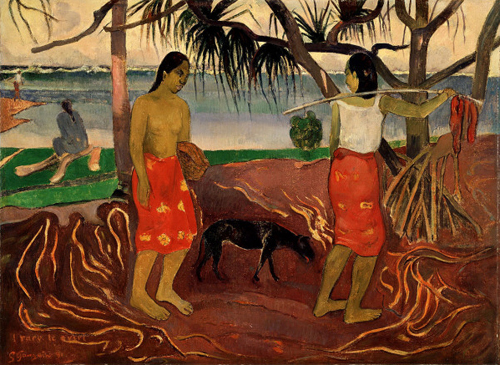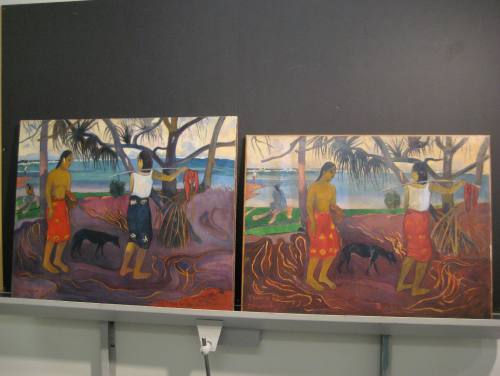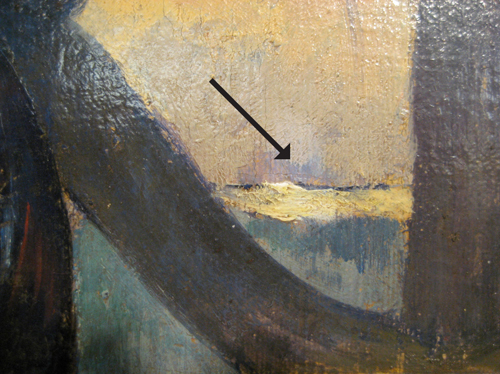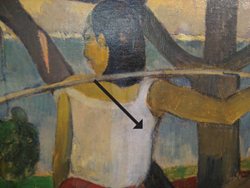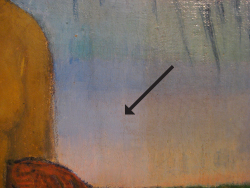I recently had the pleasure of speaking with our docents about two paintings within the collection by 19th-century, French artist Emile Bernard (1868-1941). Both of these works feature Breton women (from the region of Brittany in France) in traditional festival attire. In the late-19th century, the villages of Brittany, like many other rural sites outside Paris, had become the center of various artist colonies. The most well-documented of these sites is the city of Pont-Aven, which between 1886 and 1894 became the stomping ground of notable artists such as Paul Gauguin, Paul Serusier, and Emile Bernard. This cast of characters, along with an international array of artists from countries such as Holland, Belgium, Switzerland, became known as the Pont-Aven School and triumphed a pared-down aesthetic that departed from the naturalism of Impressionism and emphasized a synthesis of the impressions of nature and abstract forms that underlined emotional experience.
[slideshow]
Brittany was fertile ground for the Pont-Aven School artists because of its association with an exotic aesthetic that played up the primitivism of the picturesque peasants and overlooked the industrial developments and spread of Parisian taste and sophistication to the not-so-remote villages. In this sense, what the artists left out–factories, commericalism, and modern advancements–become just as much the subject of the work as what they included.
Bernard first visited Brittany in 1886 and would return to the region the next four summers. In 1888, he worked closely with Paul Gauguin, and together they launched the Synthesist style that characterized much of the work coming out of Pont-Aven. Bernard was inspired by Medieval cloisonne, or the technique of applying enamel partitions within stained glass. He and Gauguin, like many artists of the period, also looked to Japanese prints for inspiration and a means to rejuvenate the European style.
The two DMA paintings by Bernard are dated 1891 and 1892 by the artist in the lower right-hand corner of the canvases next to his signature. In 1893, he left for a ten-year soujourn in Egypt and would not return to Brittany until 1910 for a brief stay and 1939-1940 for an extended stay the year before his death.
“Othering” is the act of creating an uneven power hierarchy through the myth of a binary of “us” and “them.” This serves tp emphasize the percieved weaknesses of “them,” or the marginalized society, as a means of underlining the superiority and right to power of “us.”
These works of art can be used with students at the Museum or in the classroom. They are a great jumping off point to think about exoticism and its role in art. Exoticism is typically associated with well-known works by Orientalist painters such as Jean-Auguste Dominique Ingres and primitivists like Paul Gauguin. The Pont-Aven School works embody similar ideas of “othering,” except that the exotic projections take place within France and become a sort of internal othering. What other examples of othering, based on gender, race, ethnicity, religion, etc. can you think of in art and popular visual culture?
Ashley Bruckbauer
McDermott Intern for Teacher Programs and Resources
